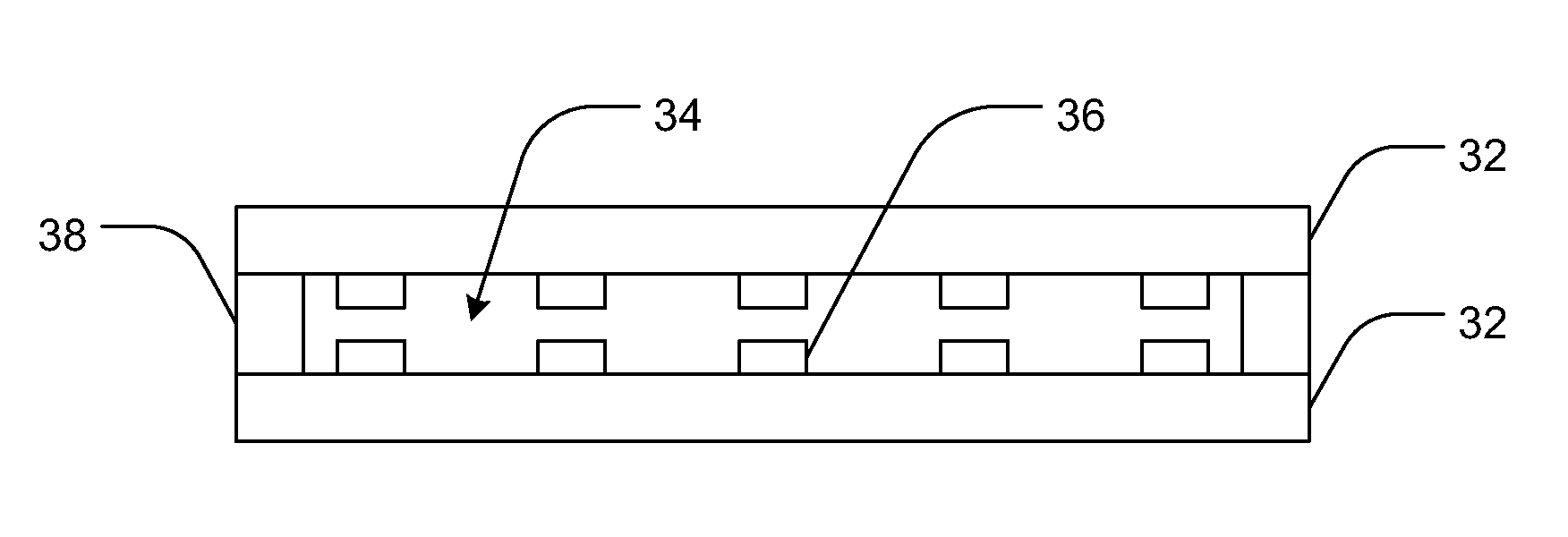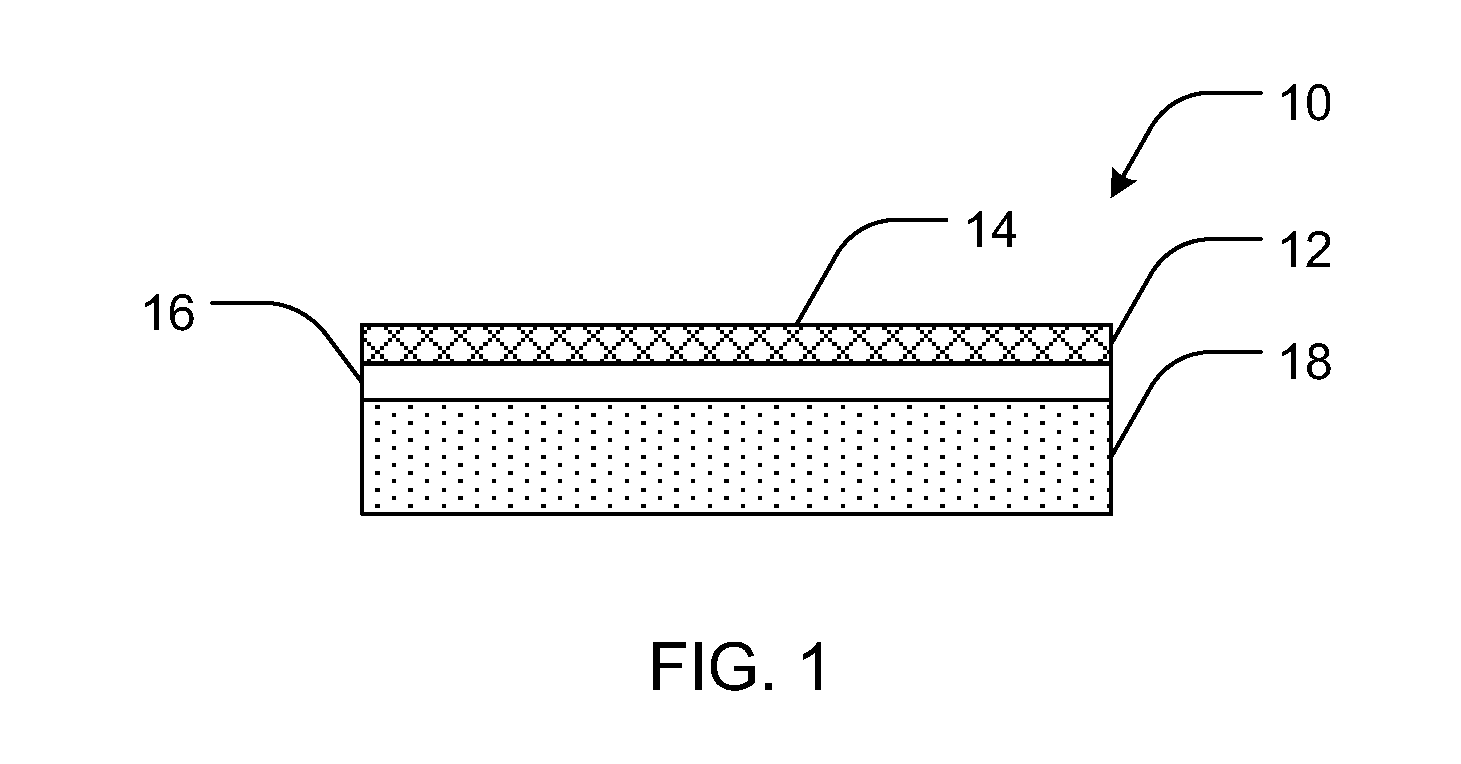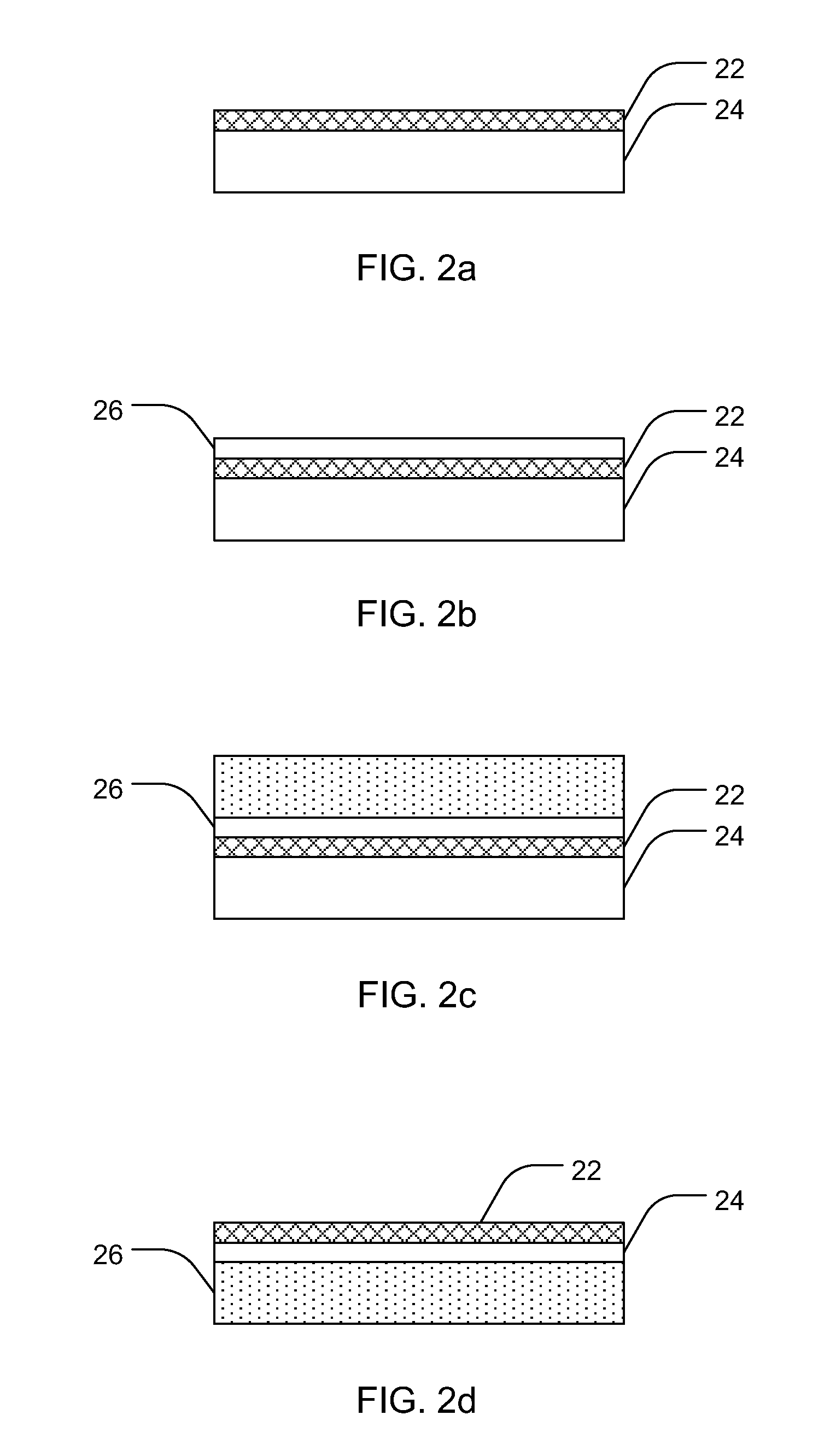Diamond neural devices and associated methods
a neural device and diamond technology, applied in the field of diamond neural devices, can solve the problems of increasing the complexity of substrate preparation and growth procedures, coatings can also be undesirable for in vivo use, and protein coatings
- Summary
- Abstract
- Description
- Claims
- Application Information
AI Technical Summary
Problems solved by technology
Method used
Image
Examples
example 1
[0068]A silicon wafer is seeded with nanodiamond in an ultrasonic bath. The nanodiamond seeded wafer is grown in a microwave plasma CVD reactor that is purged with methane / trimethyl boride, and an abundance of hydrogen. As a result, a layer of boron doped diamond (BDD) is grown on nanodiamond seeds to a thickness of about 10 microns. The BDD is electrically conducting but with a semiconductor bandgap. BDD is subsequently graded to BN / AN / GaN / InN by Atomic Layer Deposition (ALD). This graded material can absorb across the entire spectrum of visible light and some UV. The Si wafer is etched away with concentrated KOH solution to expose the BDD with the surface protruded with high density nuclei (about one trillion per square centimeter) of nanodiamond.
example 2
[0069]In this example, nitride semiconductors are not used. BDD is back converted to make graphene on the surface. A (100) face can form graphene perpendicular to the surface. Such perpendicular oriented graphene can act as an emitting antenna because graphene has minimal electrical resistance. Graphene can transmit terahertz signals due to its high stiffness. On the other hand, a (111) face can form graphene layers in parallel to the surface by straightening the puckered hexagons of carbon atoms. Such a parallel orientation can be used as a receiver for signals. Graphene is also a piezoelectric layer on diamond surface so radiation signals can be converted to phonons (lattice vibrations) vice versa.
example 3
[0070]A small single crystal diamond made (twins with triangular shape, typically flat) is etched in oxygen plasma to form a frosted surface with nano-sized protrusions. A boron-doped diamond layer is CVD deposited on the other side of the made from the frosted surface using BCl3 and CH4 diluted in H2. The CH4 is replaced with NH3 to grow a layer of cubic BN (cBN). The cBN is doped with C or Si by ion implantation followed by annealing. The result is a p-type boron-doped diamond and n-type cBN structure with nanodiamond protrusion on one side that can be used to anchor neurons.
PUM
| Property | Measurement | Unit |
|---|---|---|
| bond length | aaaaa | aaaaa |
| thick | aaaaa | aaaaa |
| thick | aaaaa | aaaaa |
Abstract
Description
Claims
Application Information
 Login to View More
Login to View More - R&D
- Intellectual Property
- Life Sciences
- Materials
- Tech Scout
- Unparalleled Data Quality
- Higher Quality Content
- 60% Fewer Hallucinations
Browse by: Latest US Patents, China's latest patents, Technical Efficacy Thesaurus, Application Domain, Technology Topic, Popular Technical Reports.
© 2025 PatSnap. All rights reserved.Legal|Privacy policy|Modern Slavery Act Transparency Statement|Sitemap|About US| Contact US: help@patsnap.com



